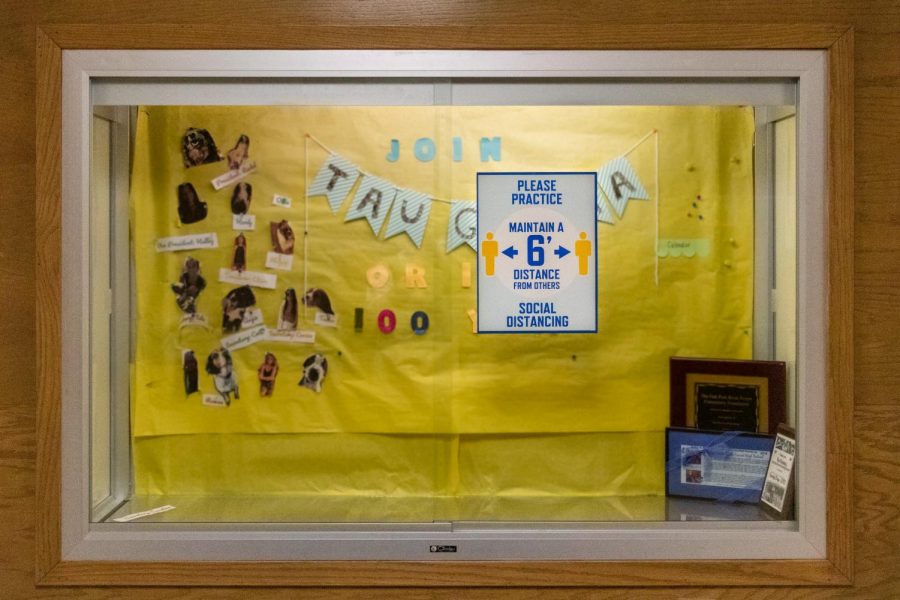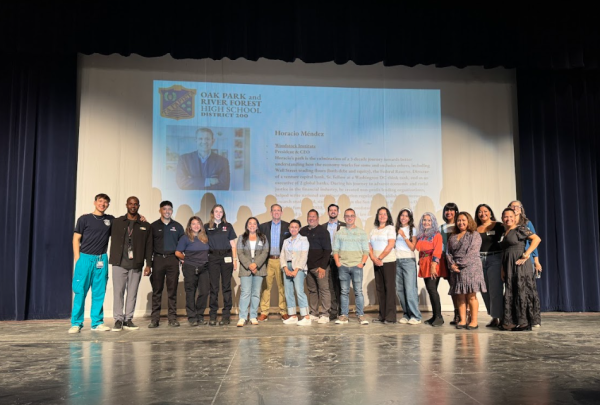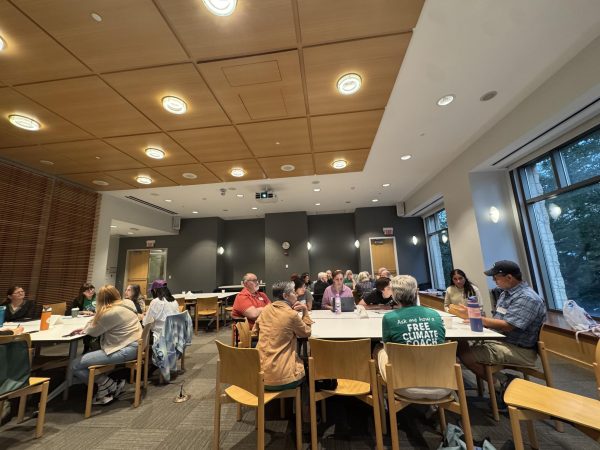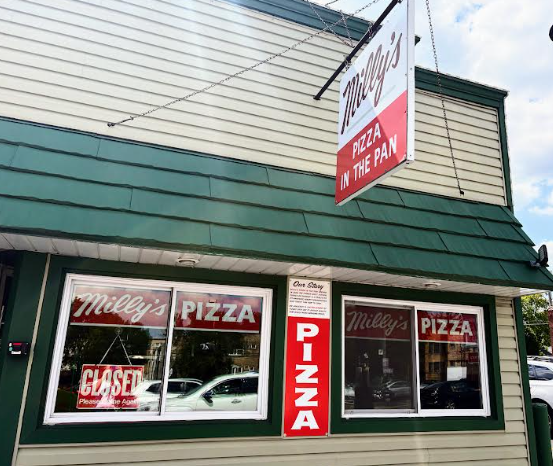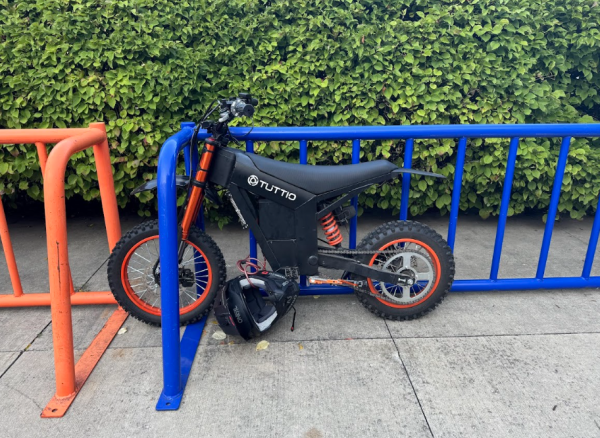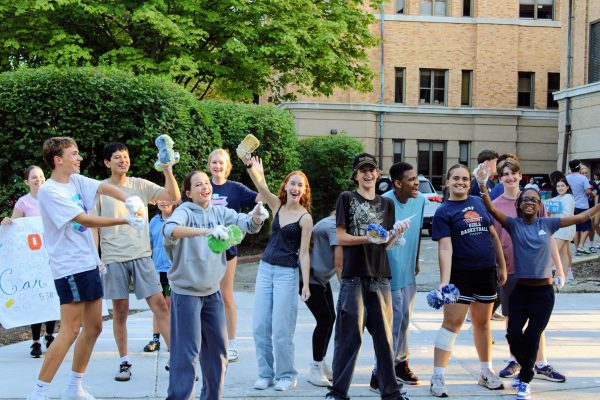Special Education department on physical learning
Social distancing reminders at OPRFHS
On Oct. 5th, students in the Special Education program began going into the school from Monday to Thursday during normal school hours for additional help with online learning. The physical learning program is called “Learning Labs.” Students who have opted into the program follow a daily routine similar to the one other students follow at home.
At 8:30 am, students arrive at OPRF’s main entrance. The security guards open the door to ensure the surface remains untouched. Then all students get their temperatures taken, and move to the cafeteria to eat breakfast, which like lunch, is free for students.
“In the cafeteria there are markers on the floor that show where to stand 6 feet apart.” said Jack Silvestri, a junior taking part in Learning Labs. Once students order, they sit down at the tables. Two students are allowed at each table, seated on opposite ends. While eating, students are allowed to remove their masks, the only time during the entire day when that is permitted.
After eating breakfast, the students split into small groups, with a maximum of eight people per group, and go to various rooms throughout the building to attend their online classes.
Other than the fact that they are in the school building,the students attend their online classes as if they were at home. Students are provided with books or any other resources that they need by paraeducators (teaching assistants), and their teachers are not in the building.
During the 30 minute break between classes, students are instructed to get as much work done as possible. Students then login to their next online class and repeat the process until lunchtime. Lunch functions similar to breakfast, where students order their food, sit at opposite ends of tables.
Once lunch is finished, students resume their school day.
Even though it may seem restrictive, Silvestri thinks the school is doing well, considering the circumstances.
“They are keeping people very safe…They make sure that people are distanced…So I do feel like for the amount of people that are there, they are doing a really good job with what they have in the school right now.”
One of the issues that has come up in Learning Labs has been advisory. Since students eat breakfast from 8:30 until 9, they are often not able to log in by 8:35 am on Wednesdays.
“With advisory you can’t really attend it because of the stuff they have us doing… they had a talk about it and they said that…. It’s really not worth it to show up for ten minutes for all the stuff we usually get emails about… If we do miss it, they tell the teachers to not mark us absent,” Silvestri said. If OPRF were to transition to a hybrid learning plan, they would likely have to change the advisory times to meet this challenge.
According to Silvestri, since students are partaking in their regular online classes, an issue arising is students talking to their own classes at the same time “One of the other complicated things about it is the teachers aren’t in the building. It’s all online classes, which means if you need to talk it’s very hard because of people (in the room) talking,” Silvestri said.
When asked if he thinks the school could handle being filled up to a third capacity under a similar model, Silvestri expressed some concern.“If there were too many people there, they can only have so many adults there supervising, and it would take a lot of time for people to get in because they have to take everyone’s temperature on the way in,” Silvestri said. “Just to get everyone through would take a while. And the other big thing is that if you have 1,000 people, they can’t guarantee that everyone is wearing their masks. It’s hard to keep track of everybody.”
On OPRF’s Frequently Asked Questions site, it says OPRF could accommodate 800 students, or 25 percent capacity, under social distancing requirements.
Because construction is ongoing at OPRF, Silvestri said “the hallways are smaller…there is much less space…they have that whole section[s] blocked off for construction.” This would impact the ability of students to social distance, which is essential to the return to school.
Coordinating physical learning during COVID-19 is clearly a challenge. Through “Learning Labs,” the Special Education department has created a system that works for them.

